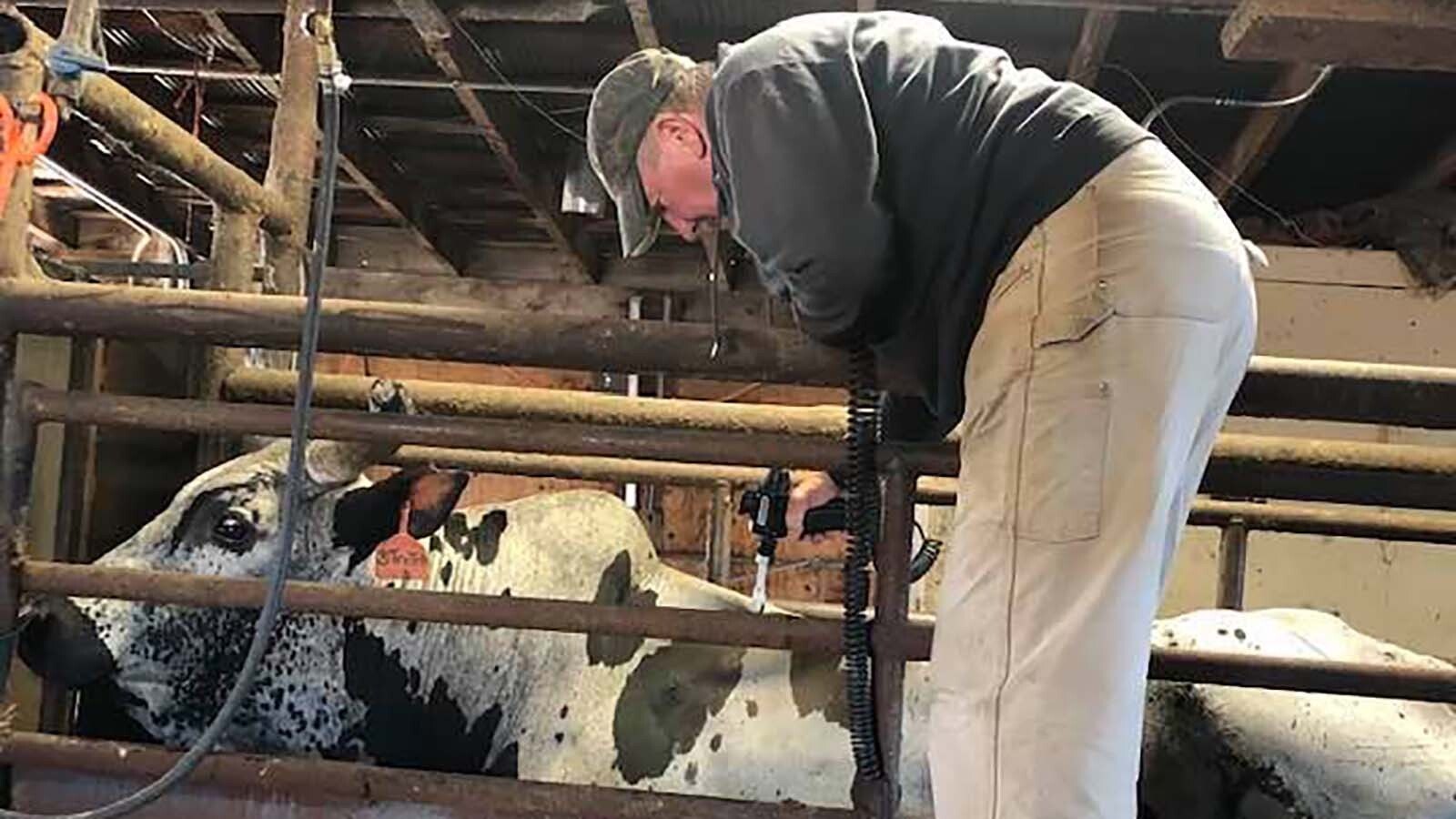CASPER — At 75 when most men are retired, Casper’s John Wickman is working to design and build cheap but effective rockets the military can produce to shoot down drones or hit enemy targets.
An engineer who owns Wickman Spacecraft and Propulsion Co., Wickman said the price tag for his cheap rockets will run about $1,000, which is only 0.1% of the $1 million the government now pays for a similar rocket from defense contractors.
Wickman’s not some crackpot who plays with model rockets in his garage. He knows rockets and has the resume to go along with his vision. He’s worked with rockets and solid fuel motors for most of his career, first with defense contractors and then for his own company, which over the years has worked with the federal government on other projects.
“Primarily what we’ve done is research and development type work,” he said. “Although now we will be changing and moving into manufacturing which is something new for us as a company.”
The president of his own company since the 1980s, Wickman began his aeronautical engineering career working for the Pratt & Whitney Aircraft Co., and then Aerojet, which is now called Aerojet Rocketdyne. In the late 1970s and 1980s, he worked with the MX, Minuteman and Polaris missiles.
In 1985, he launched out on his own and, in 1986, received a contract to lead a team to analyze the failures that caused the Space Shuttle Challenger disaster. That led to a partnership with the son of a German World War II rocket scientist and dozens of contracts in space technology projects and programs.
But now after a semi-retirement, he plans to ramp up operations at his company located in a building at Casper/Natrona International Airport to become a commercial rocket supplier for governments in need of cheap but effective missiles such as the U.S. and Ukraine.
‘Dirt Cheap Missiles’
“What I am working on now is basically dirt-cheap new missiles,” he said. “The missiles we have in the military are way too expensive. … This is not pie in the sky. To me the incredible thing is the $1 million number. The way we are going to make these things is not the way industry makes them. We took the book and threw it out the window.”
With backing from private investors, Wickman said he has “backchannel” connections to the Ukrainian government who will be able to help him test prototypes in actual battle conditions.
Wickman calls the Ukrainian War an “eye-opener” for governments because five $200 drones are able to take out sophisticated Abrams tanks. Ukrainians pulled the tanks from the battlefield with their Kamikaze drone attacks.
News sites such as Axios and others have quoted Pentagon officials in recent months about the cost effectiveness of using million-dollar weapons to shoot down thousand-dollar drones. One Axios headline declares: “The Pentagon’s growing costly headache: Cheap drones.”
“You can’t spend a half-million dollars to take out a $300 drone,” Wickman said. “It’s not cost effective.”
Commercial Project
Because his project will be a commercial and not military one, Wickman said he will be free from the burden of government oversight.
Once he develops the rocket and tests it, he said his plans are to move forward with creating a manufacturing facility in Casper. He believes if he builds a proven product, there will be military customers in line to buy it.
Wickman said he already has done research into the electronics and is looking at the design of the rockets.
“That’s what our focus is going to be on in the next few years. We are going to get that factory built, get these designs, get them tested in combat, then we are going to get it in production,” he said.
Thinking out-of-the box and doing “high-risk, high-reward projects” have been a big part of Wickman’s successes. He jokes that he feels like the “last man standing” as a representative of the old-school aeronautical engineers who trained just as the personal computer age dawned in the early 1970s.
In one of the rooms of his building, there is the original Aerojet launch panel that sent intercontinental ballistic missiles toward space in the 1980s. The panel launched rockets from an Air Force base in California to a Pacific island bullseye in a lagoon some 6,000 miles away.
His late partner Adolf Oberth held more than 300 patents, and his father was Herman Oberth, the German rocket pioneer who was the professor and mentor for famous rocket scientist Wernher von Braun.
Adolf Oberth had worked in machine shops at the noted Peenemunde Army Research Center in Germany as a 14-year-old during World War II. The center was where the German V-2 rocket was developed.
Solid Fuel Expert
Wickman said Oberth was an expert in developing and mixing solid fuel propellants, and their first big contract for the U.S. Air Force involved solving the problem of how to use ammonium nitrate as a rocket fuel. Oberth developed a formula using magnesium that was to be part of the Reagan administration’s Star Wars plans. But it was never used due to the collapse of Star Wars missile defense funding.
A variation of the formula was used by Wickman in more recent years for a secret satellite project for the government that actually went into space.
The company also in a separate project with the Jet Propulsion Lab, engineered jet engines and rocket motors that use CO2 environment in the atmosphere on Mars as fuel.
Wickman’s experience with his partner and expertise with solid fuel rocket motors also has been put into practice in other ways such as his development of a better solid fuel for U.S. Army signal flares.

Hands-On Class
And a sister company that Wickman launched in 1994 called CP Technologies involves teaching hobbyists how to build their own rockets and rocket motors with solid fuel. Many professionals have shown up in recent years for the three-day course. Each student receives a Wickman book “How to Make Amateur Rockets” and software.
“This year we sold out that class with about 70 percent who were engineers from General Dynamics,” he said. “Our next class in September, over half of them are from General Dynamics. We’ve had the vice president of engineering for General Dynamics take the class and loved it. We’ve had vice presidents of engineering from all the major aerospace companies take this class not to mention military in Thailand and other places.”
Next year he plans to offer a class for professional engineers. He said some of the various aerospace professionals he has had get frustrated because they see how cost-effective it could be to produce a rocket motor “but their hands are tied from government regulations and red tape.”
Wickman’s company rents an area of the airport where rocket motors can be fired and tested, but not launched.
Contact Dale Killingbeck at dale@cowboystatedaily.com

Dale Killingbeck can be reached at dale@cowboystatedaily.com.










